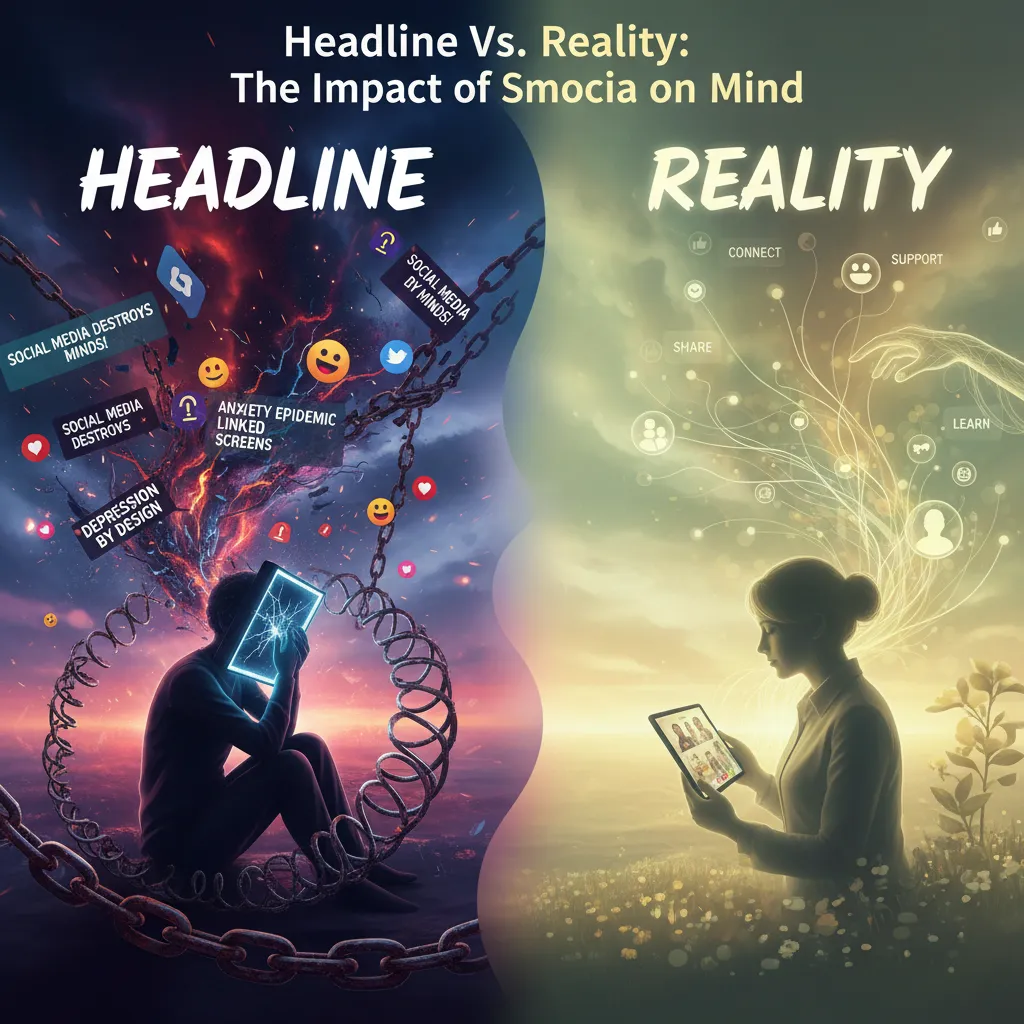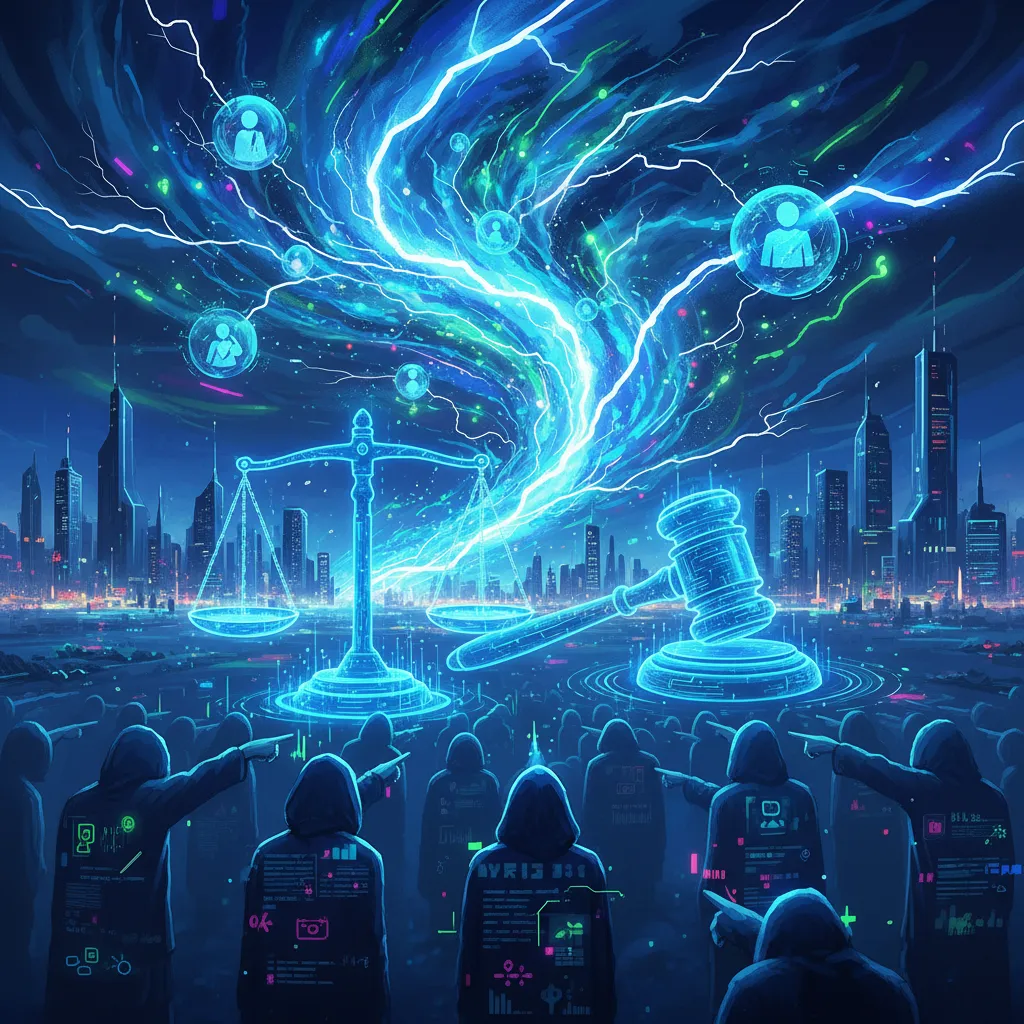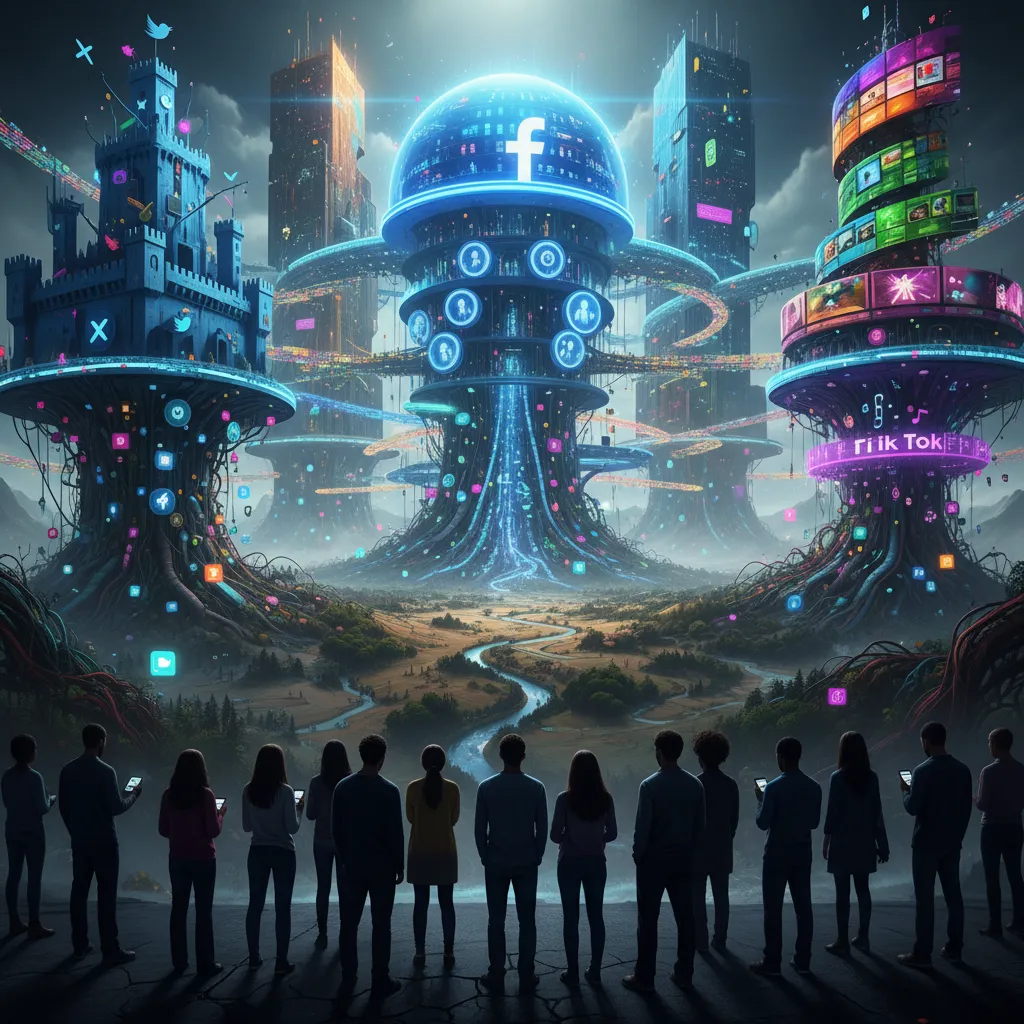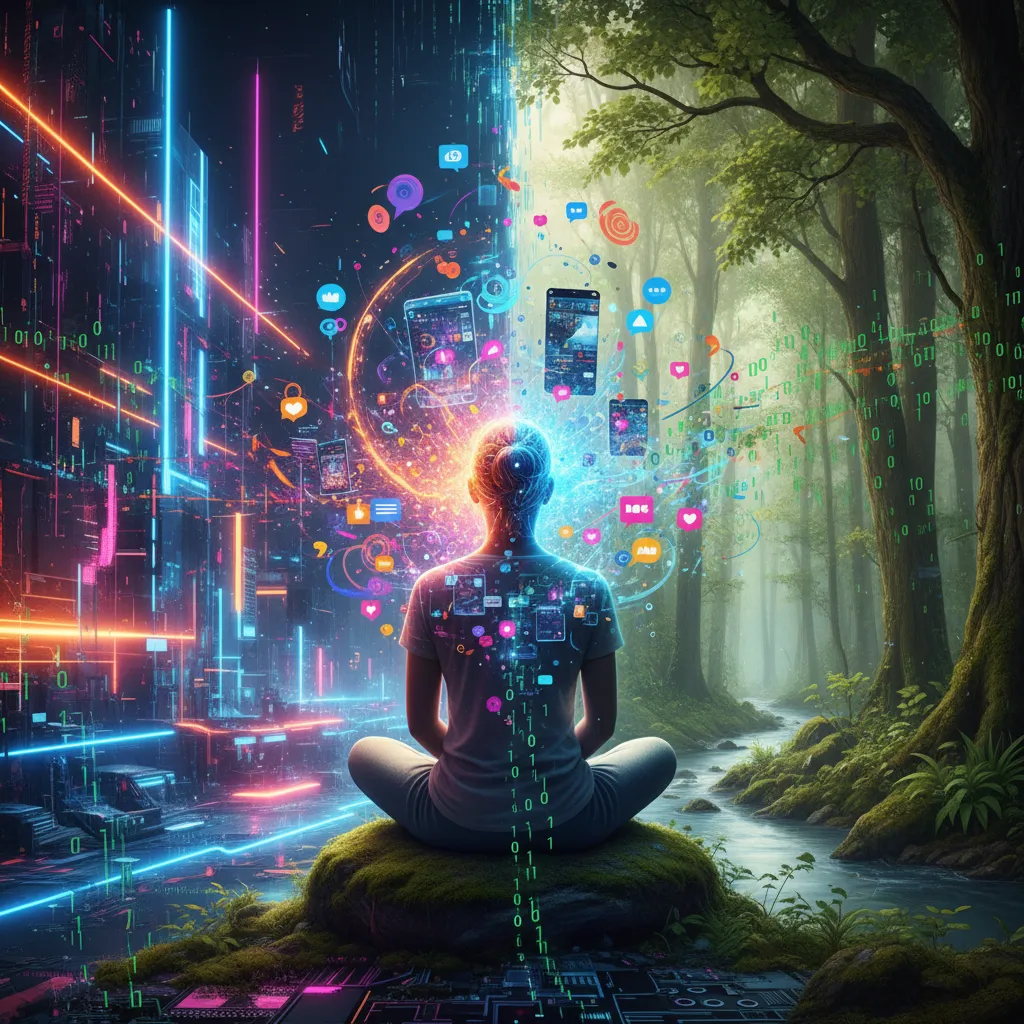Let's be honest: most of us have some sort of social media love-hate relationship. I still remember the crackle of excitement (and anxiety) seeing my first Instagram post reach 100 likes. But does all this scrolling actually mess with our minds, or is it just modern folklore? With everyone from Stanford professors to TikTok stars weighing in, it's time to cut through the noise and get real about the highs, lows, and weird in-betweens of social media's mental impact.
Headline Vs. Reality: Does Social Media Really Wreck Our Minds?
When it comes to Social Media Mental Health, the headlines are hard to miss: “Social Media Is Destroying a Generation,” “Screen Time Effects Are Ruining Our Brains,” and more. But what does the research actually say? The reality is far more nuanced than the panic suggests.
Stanford professor Jeff Hancock, who leads the Stanford Social Media Lab, has spent years sorting through hundreds of studies on Social Media Use Effects. As he puts it:
"Every day I would find a paper... Facebook causes loneliness, then ‘Facebook reduces loneliness’—I was really puzzled. I wanted to know where the data were actually pointing."
– Jeff Hancock
So, what does the data show? Hancock’s review reveals that the impact of social media on Mental Health Symptoms—like depression and anxiety—is usually small. In fact, most studies find only a slight link between social media use and changes in mental health, and these effects can be both positive and negative. For most people, the net effect is close to neutral.
- 40% of users report feeling isolated after social media use.
- Among children, average daily social media use jumped from 7 to 73 minutes in three years.
- During that time, depressive symptoms rose by 35%.
But these numbers don’t tell the whole story. Not everyone is affected the same way. For some, social media can be a lifeline—connecting with friends, finding support, or discovering new interests. For others, it can fuel comparison, isolation, or anxiety.
Context matters. Viral stories, like the infamous “West Elm Caleb” saga, show how quickly a personal moment can spiral into a public spectacle. When a TikTok video about a bad date goes viral, it can feel emotionally overwhelming and even threaten privacy. These extreme cases grab attention, but they aren’t the everyday experience for most users.
Ultimately, the effects of screen time and social media depend on how, why, and how much you use these platforms. The headlines may scream panic, but the data whisper nuance: for most people, the impact is small, and the story is more complex than it first appears.

Viral Storms, Public Shaming, and the Wild West of Digital Accountability
Imagine posting a simple update about your day, only to wake up and find your private life splashed across hundreds of videos, hashtags, and even brand promotions. This is the new reality for many who go viral on social media platforms. Viral moments can flip your world upside down—often without warning or fairness. For Kate Glavin, a TikToker who shared her dating experiences, what started as casual content quickly spiraled into a viral storm. Suddenly, her date—dubbed “West Elm Caleb”—became the center of a hashtag-driven scandal, with hundreds of videos dissecting his life and choices.
Public shaming is nothing new. As social media researcher Angela points out, “The idea of public shaming has been around since the very, very olden days—think medieval times when people would throw tomatoes at people.” The difference now is the speed, scale, and permanence. Instead of a town square, the entire internet becomes the audience. Instead of tomatoes, it’s mean comments, doxing, and trending hashtags.
For most viewers, these viral scandals are just today’s entertainment. As Kate herself said,
"It just made no sense to me that people were consuming this... like it's this week's episode of The Bachelor."
But for those caught in the digital crosshairs, the effects are deeply personal. Kate described how her face became a meme, her privacy unraveled, and she even received death threats. This is a harsh reality of online bullying effects—what might seem like a fleeting trend to the masses can trigger real-world anxiety, fear, and even trauma for the person involved. Research shows that public shaming digital events can intensify mental health symptoms, especially when the scrutiny is sudden and overwhelming.
Hashtag-driven viral scandals can generate hundreds of videos and even brand tie-ins overnight. Companies jumped on the “West Elm Caleb” trend, offering discounts and using the story for marketing. Meanwhile, strangers online tried to piece together personal details, crossing the line from curiosity to invasion. This “Wild West” of digital accountability means that anyone can become a target, and the consequences can be swift and severe for your social media mental health.

Not All Feeds Are Created Equal: How Social Media Shapes (and Warps) Communities
When you open your social media feed, what you see—and how it affects you—depends on who you are and the community you belong to. Youth mental health, cyberbullying effects, depression and anxiety, social media privacy, and digital literacy education all play a role in shaping these experiences.
Different Realities for Different Ages
Teens are especially vulnerable to the pressures of social media. Their brains are still developing, and they are more sensitive to peer feedback and comparison. Research shows that cyberbullying increases depression rates by 70% among affected teens. The constant exposure to likes, comments, and sometimes cruel messages can lead to serious depression and anxiety. In contrast, middle-aged adults often feel less impacted, as they juggle other life priorities like work, children, and aging parents.
Older adults face a different set of risks. Many have lower digital literacy, making them more susceptible to scams, fraud, and misinformation campaigns. These can have real-world consequences, especially when it comes to voting or financial security. As one expert notes, “They also have less digital literacy… and that can make them a little bit more vulnerable.”
Communities of Color: Trauma and Empowerment
For marginalized groups, social media can be both a lifeline and a source of harm. Black, Indigenous, and people of color (BIPOC) are often exposed to racist comments, targeted harassment, and viral traumatic content. Tony Adiami, co-founder of BLM Digest, describes this experience:
"The virality of that content is known as something called viral black death—being re-exposed to that can be really traumatizing."
Repeated exposure to violence and injustice online can be re-traumatizing, leading to increased anxiety and emotional exhaustion. Yet, these same platforms also offer spaces for community, activism, and healing—especially during times of protest or crisis.
Systemic Issues and the Need for Digital Literacy Education
- Systemic racism and algorithmic bias can amplify negative experiences for some groups.
- Disinformation campaigns target older adults and marginalized communities, worsening mental health impacts.
- Digital literacy education is crucial for protecting vulnerable users from scams, cyberbullying, and privacy invasions.
Nearly 78% of people use social media before bed, often disrupting sleep and further impacting mental health. The unique challenges faced by each group highlight why not all feeds—and not all social media experiences—are created equal.

The Bright Side Nobody Clicks: Connection, Creativity, and Control
When you think about social media, it’s easy to focus on the negatives. But there’s a bright side that often gets overlooked—especially when it comes to Positive Effects Youth and older adults experience online. Social media isn’t just about endless scrolling; it’s about connection, creativity, and control.
Online Community Support: Finding Your People
For many, social media is a lifeline. If you’re struggling with mental health or feeling isolated, finding online support groups can be empowering. Platforms make it possible to connect with others who share your experiences, no matter where you live. This sense of belonging is especially powerful for young people exploring their identity and for older adults who may be losing social ties. Even something as simple as sharing photos with family—yes, even grandma on WhatsApp!—keeps relationships strong across distances.
Creative Self-Expression: Showcasing Talents
Social media algorithms can actually help you discover new interests and creative outlets. Apps like TikTok and Instagram offer tools that let you express yourself in ways that weren’t possible before. Watching young people create, share, and inspire each other online is proof that these platforms can be a force for good. Creative self-expression isn’t just fun—it’s uplifting and can boost your mental health.
Control Through Curation: Your Feed, Your Rules
One of the most important lessons in Digital Literacy Education is that you have more control than you think. Actively unfollowing negative or triggering accounts and filling your feed with supportive, joyful content can make a huge difference. Mental health researchers and creators agree: a well-curated feed and conscious platform use can greatly reduce negative impacts. As one expert puts it:
"Your mindset about social media predicts your well-being more than the actual amount of time you spend on social media."
Key Tips for Social Media Mental Health
- Join online communities that support your interests or challenges.
- Use creative tools to express yourself and connect with others.
- Practice smart curation—unfollow negativity, follow positivity.
- Remember: your mindset matters more than your screen time.
By embracing these strategies, you can turn social media into a source of support, inspiration, and genuine connection.
Big Fixes: The Role of Policy, Platforms, and People
When it comes to social media and your mental health, personal responsibility matters—but it’s not the whole story. The digital world is shaped just as much by the policies set by governments and the choices made by the platforms you use every day. As you scroll, it’s important to remember that systemic solutions are necessary for healthier digital spaces. Not everything can or should be fixed at the individual level.
“For us to have dignity in the digital age, it requires all three: personal responsibility, corporate responsibility, and government responsibility.”
Corporate accountability is a crucial part of this equation. Social media companies must do more than just offer new features—they need to take real steps to limit hate, extremism, and the manipulation that comes from harmful social media algorithms. This means reviewing and changing the ways their platforms might amplify toxic content, sexism, or misinformation. By promoting inclusive communities and removing algorithmic incentives for negativity, platforms can help protect social media mental health for everyone.
But companies can’t do it alone. Governments have a powerful role in shaping the digital landscape. Strong public policy is needed to regulate social media privacy and data use, ensuring that your information isn’t collected or manipulated in ways you don’t understand. Policies should also encourage a diversity of viewpoints online, breaking down filter bubbles and making sure everyone feels respected in digital spaces. This kind of oversight is essential for building trust and safety on the internet.
Finally, digital literacy education is more than just a buzzword—it’s a survival skill for the digital decade. Learning how to think critically about what you see online, how algorithms work, and how your data is used empowers you to make better choices. Education helps you spot manipulation, avoid echo chambers, and engage with social media in a way that supports your well-being.
In the end, a healthier future for social media depends on all of us—individuals, companies, and governments—working together. By demanding corporate accountability, supporting smart public policy, and investing in digital literacy, we can create online spaces that respect our dignity and protect our mental health. The big fixes start with shared responsibility, and together, we can move beyond the scroll to a more mindful digital world.
TL;DR: Social media's effect on mental health isn’t one-size-fits-all. Think small swings, rare viral storms, and both surprising risks and rewards. You can regain control—with smarter habits, careful curation, and a dash of digital literacy (even a meme won’t fix everything, but hey, it helps).



